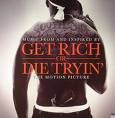The stock market is crashing—slowly, and in plain view of the people who count on it most. The 53% plunge in the Dow Jones industrials since October 2007 has wrecked the college- and retirement-savings plans of millions of investors. It has permanently lowered the long-term investment projections of private endowments and pension funds. It has sent corporate compensation experts scrambling to figure out how to reward top employees. All told, more than $10 trillion of stock market wealth has vanished, and with it the confidence that springs from financial security.
While 17 months may feel like an eternity, it could turn out merely to be a prequel. The questions on the minds of investors, money managers, and corporate executives are threefold: How much longer will the bear market last? How low will the averages go? And when might investors get their money back?
As Warren E. Buffett has said: "Beware of geeks bearing formulas." It's especially difficult to predict the direction of the markets these days because the most popular gauges, from price-earnings ratios to measures of investor "capitulation," have stopped working. The peculiar nature of this bear market limits the kit of useful tools to just a handful of bond market and business confidence indicators.
Those signals, along with interviews with financial historians, market strategists, and economists, point mostly to painful scenarios. Stocks don't seem likely to fall much more from here—but market turmoil could continue for months or even years. Worse, by the time the market revisits its highs, so many years are likely to have passed that many older people will have gotten out of stocks, missing out on the rebound. The flip side is that new money put into the stock market now will likely do comparatively well over the long term. That's welcome news for twentysomethings and executive compensation consultants, but perhaps not for soon-to-be retirees.
SEARCHING FOR PRECEDENTS
History can't provide as many clues to the market's direction as usual. That's because while most bear markets more or less track the business cycle, this one began with a broken financial system. That makes the current bear more like the one that snarled from 1929-32 than others of the past 100 years. But that analogy doesn't fit perfectly, either. "We have no good precedents to help us," says Peter L. Bernstein, a 90-year-old market essayist and financial historian who was a teenager during the Great Depression. "What's breathtaking is the rapidity of the decline and its breadth."
The market anxiety is especially high now because of the raging fire in the economy. "The next six to nine months are going to be awful," says Desmond Lachman of the American Enterprise Institute. Waves of corporate defaults, home foreclosures, bank failures, and job losses are still to come.
Of course, the stock market already knows that for the rest of 2009 the economy will be a "shambles," to use Buffett's recent description. Today's low share prices may well reflect that. The Dow Jones industrial average has already fallen through the 7,000 level predicted earlier this year by Nouriel Roubini, the New York University economist nicknamed Dr. Doom for daring in 2006 to foretell the credit calamity. That's right, even Dr. Doom was too optimistic.
If recent history were a reliable guide, it would be just about time for the bear to retreat to his den, which nowadays might include a flat-panel TV and leather chair bought at a foreclosure sale. The market's average decline during bear markets since the 1929 market crash is just 30%. What's more, those past bears lasted an average of 13 months, making this one look not just mean but old.
But this is no ordinary slump. Even the most basic market gauge, the price-earnings ratio, which measures a company's share price relative to the earnings it generates, is unreliable. Historically, the overall market has traded at prices that average 15 times earnings, ranging from roughly 8 during the worst bear markets to 25 or greater during bull runs
-




No comments:
Post a Comment